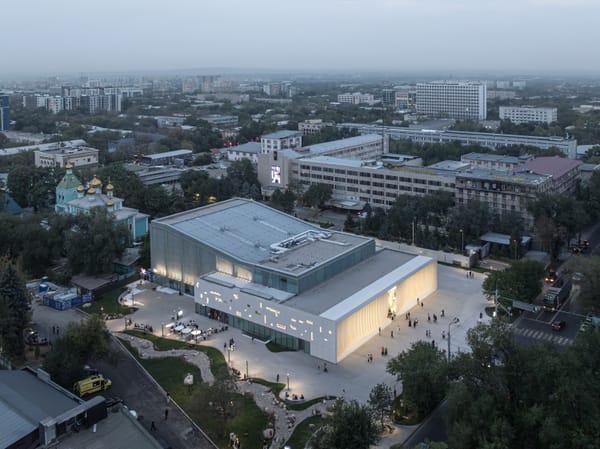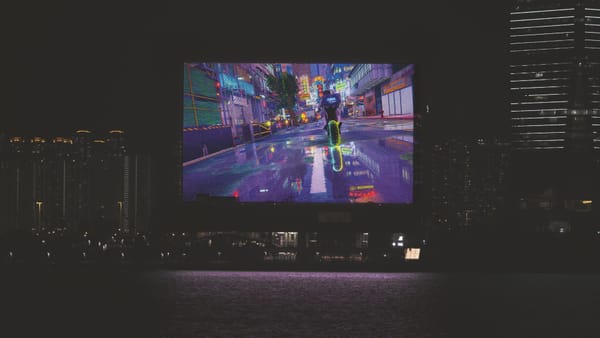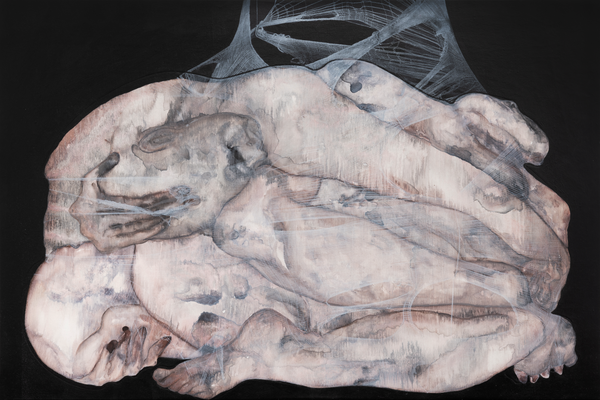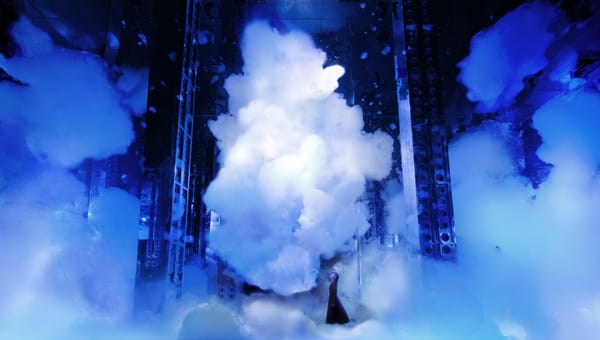People
New Currents: Xingzi Gu
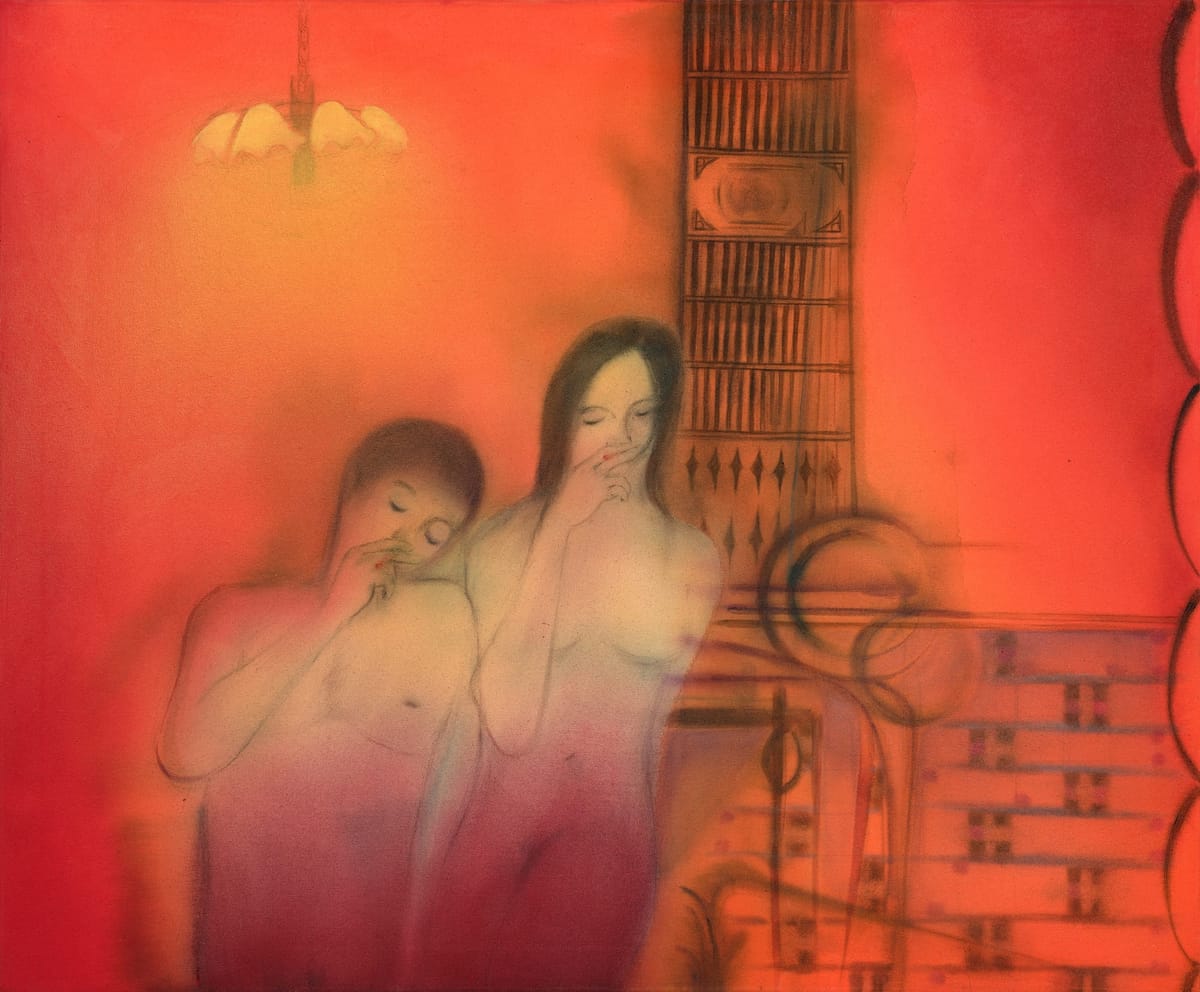
With adolescence comes a new sense of self which develops in that strange moment when we become hyperaware of our identity, as if our consciousness has split into performer and observer, and we feel everything twice: once in the moment, and once through the lens of our own introspective gaze. The teenage French poet Arthur Rimbaud captured this liminal state of mind that signals our first encounters with love, desire, and melancholy in an 1871 letter, writing: “For I is an Other. . . . I am present at this birth of my thought.” Such themes of connection and alienation permeate the works of Chinese-born artist Xingzi Gu, who translates these visceral experiences into a distinctive painterly language.
Drawing from Japanese coming-of-age cinema, Chinese Bildungsroman novels, intimate snapshots on social media, and nebulous urban imagery, Gu’s works are reminiscent of scenes from young adult films: adolescent lovers sharing fleeting moments in the nude, idle bodies resting in tender afterglow, and solitary youths drifting through boundless landscapes. These evanescent, almost spectral characters emerge from atmospheric color fields, then dissolve again like memories half-remembered or dreams half-forgotten.
In Orange Bedroom (2023–24), two naked figures lean into each other, eyes closed as they smoke cigarettes beneath a faintly gleaming lamp. Painted in soft translucent layers, their pale upper bodies dissipate into a deep crimson below, melding with the saturated orange-red background. Although the lamp suggests interiority, the architectural elements looming outside—rendered in smudged, sooty contours—seem to be in close proximity, creating a surreal ambience where spatial boundaries blur.

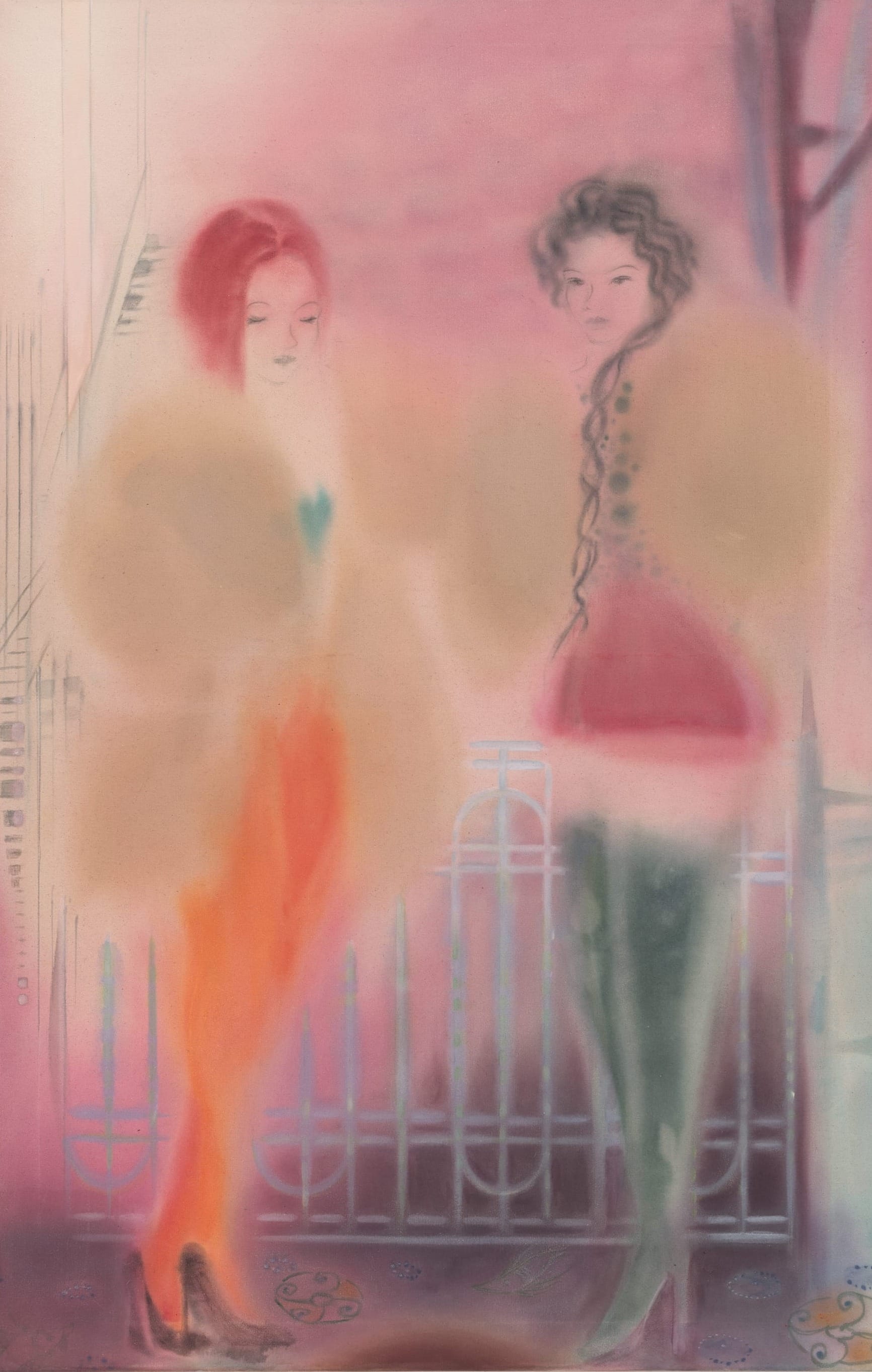
Meanwhile, Lili Pond (2023–24) depicts a lone teenaged boy whose bare torso appears as a luminous silhouette traced with wispy blue lines against a moss green backdrop. The ducks floating on either side of him are almost phantasmal as they emanate a delicate luster. Gu’s tableaux are often suffused with this misty sensibility, whereby bodies become permeable to their surroundings, at once absorbing and reflecting the chromatic moods through their physicality.
At the same time, the concept of dual perception runs through Gu’s oeuvre. Take Untitled (moon and cherry) (2025), in which two young women, both decked out in fur coats and heels, bask in a rosy haze on the street. Their poses—seemingly casual yet subtly composed—denote a particular kind of performative gesture that emerges during early adulthood: a carefully curated staging of a certain kind of self, incited by a perpetual act of self-voyeurism.
Louis Lu is an associate editor at ArtAsiaPacific.

